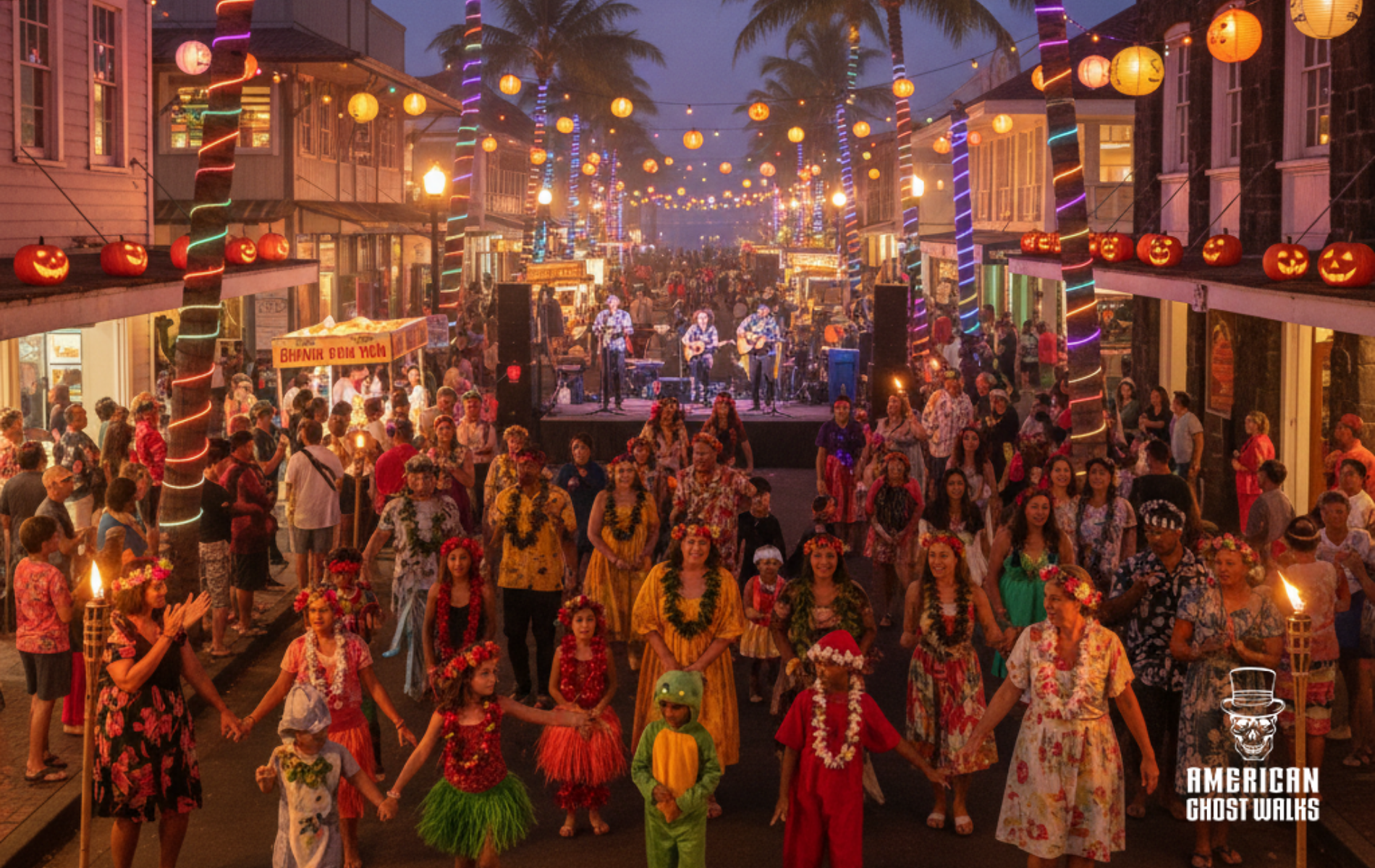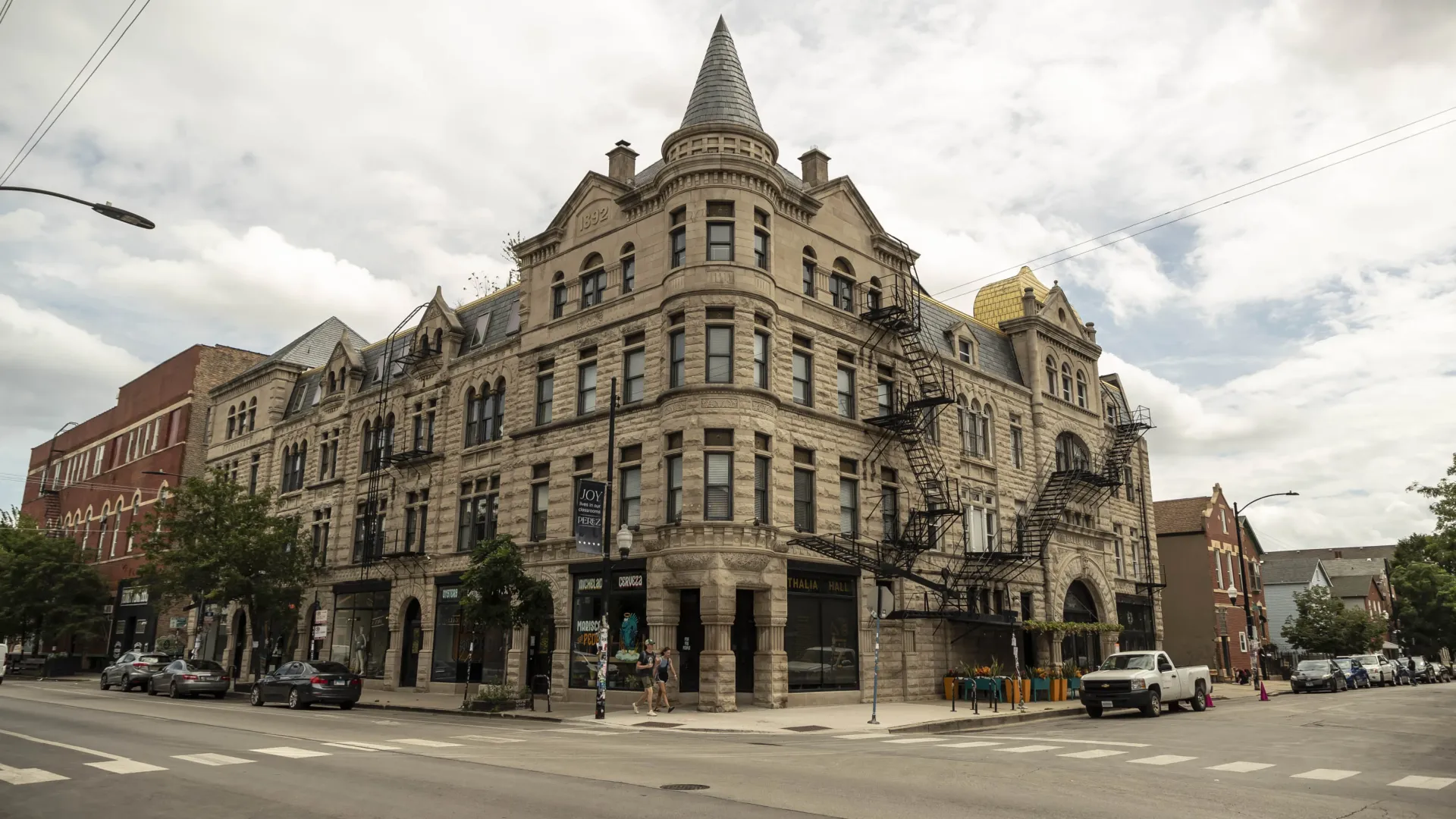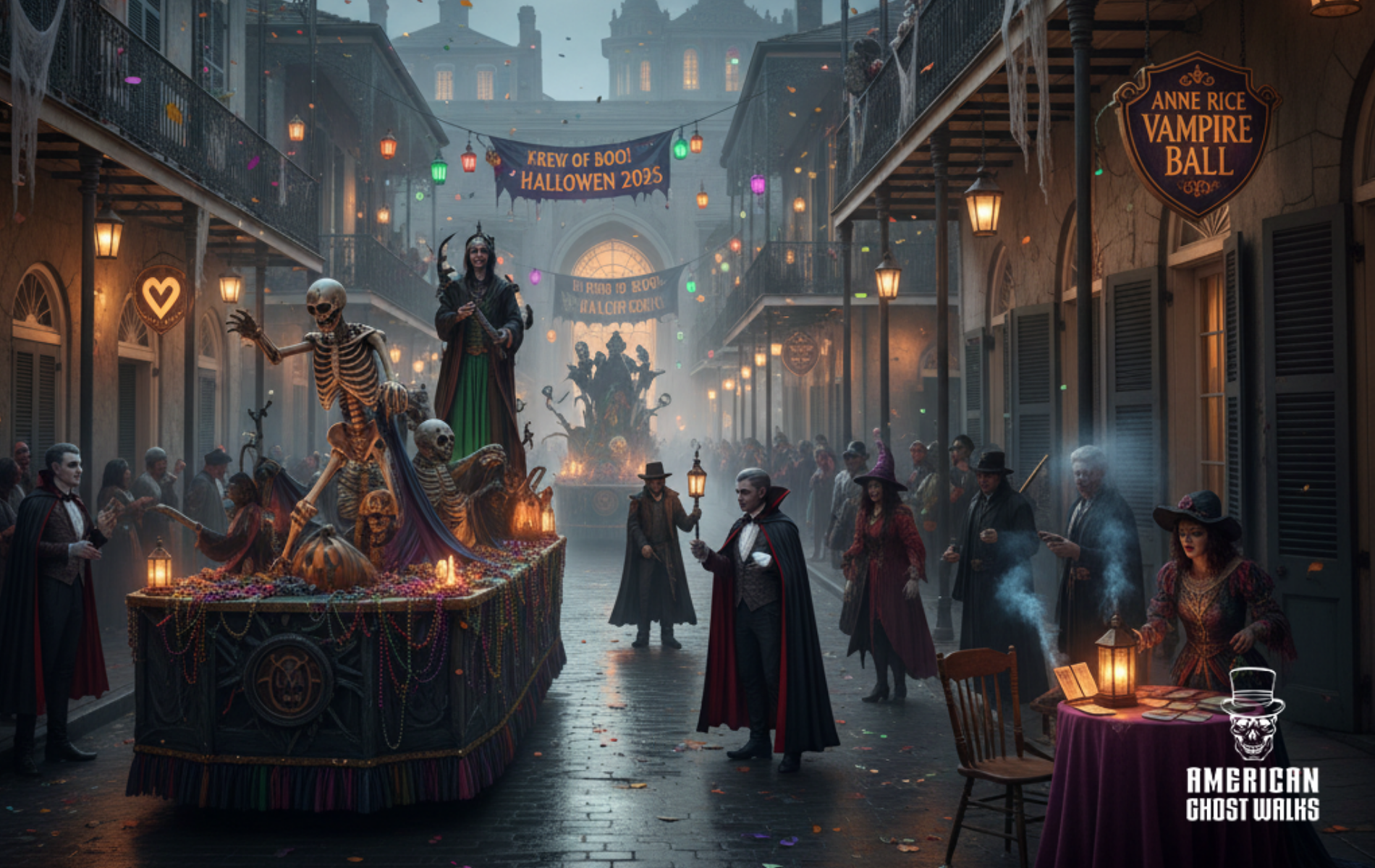What is 99 Steps in St. Thomas? (The Real Story Behind the City’s Famous Staircases)
St. Thomas tours often spotlight the island’s stunning beaches and pirate history, but there’s one iconic landmark that’s easy to overlook: the 99 Steps. These historic Danish-built stairs in Charlotte Amalie are more than just a photo op. They are a portal to the past and a favorite stop for history lovers and curious travelers alike.
But why are they called “99 Steps”? And how did these unique staircases become one of the most talked-about features on the island?
Let’s explore the surprising origins of the 99 Steps, what makes them special, and how to experience them for yourself.
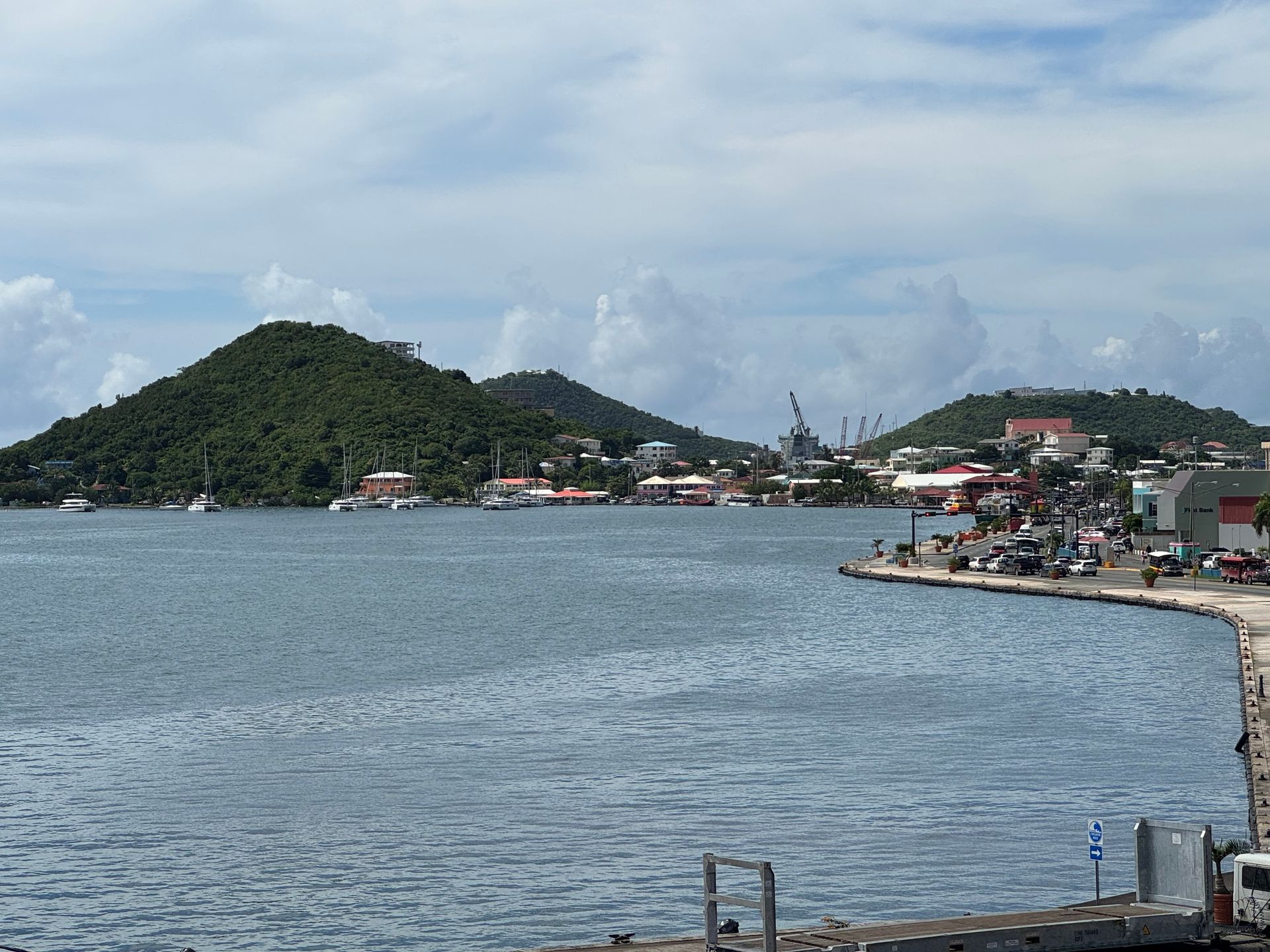
What Are the 99 Steps in St. Thomas?
The 99 Steps are one of several historic staircases built in the 1700s by Danish colonists to help people navigate the steep hills of Charlotte Amalie, the capital of St. Thomas. While the most famous staircase is known as the “99 Steps,” it actually contains about 103 steps, depending on how you count them.
These bricks were brought over from Denmark as ship ballast, giving the stairs both structural and historical value. Surrounded by flowering bougainvillea and pastel colonial buildings, the 99 Steps are a perfect blend of Caribbean beauty and European design.
They are also one of the most photographed landmarks on the island and a highlight on many
St. Thomas tours.
The Danish Colonial Era and the Birth of the 99 Steps
From 1671 until 1917, the Virgin Islands, including St. Thomas, were governed by Denmark. Charlotte Amalie, the capital city, was named after Charlotte Amalie of Hesse-Kassel, queen consort to King Christian V of Denmark. During this period, the island became an important hub for trade, shipping, and sugar production.
The city’s geography posed significant challenges. Built on a series of hills and cliffs, Charlotte Amalie had few roads, and those that existed were often difficult to traverse, especially for transporting goods like sugar, rum, and spices.
To address this, the Danish colonists engineered a series of step streets, constructed primarily from red bricks brought over from Denmark. These steps allowed workers, merchants, and residents to move more efficiently between the harbor area and elevated neighborhoods. The design was practical but also demonstrated European architectural influence adapted to Caribbean terrain.
Over time, these staircases became integral to daily life in Charlotte Amalie and remain some of the best-preserved examples of Danish colonial infrastructure in the Americas.
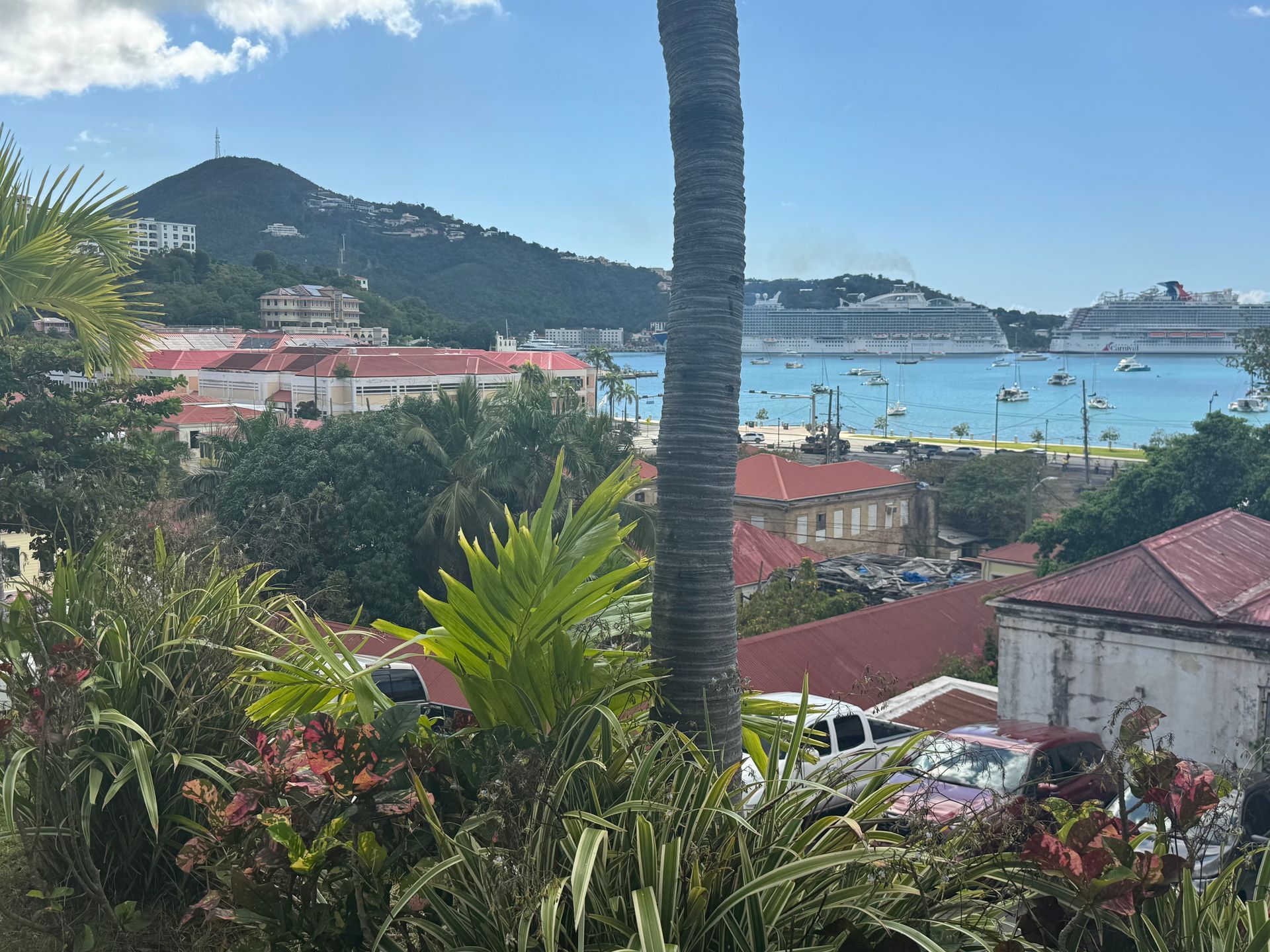
The Architecture and Construction of the 99 Steps
The 99 Steps were built using bricks imported from Denmark, which were used as ballast in ships traveling to the Caribbean. These bricks were laid on top of coral stone foundations, creating durable and weather-resistant staircases that have withstood centuries of tropical climate.
The stairs climb sharply up Government Hill, rising approximately 60 feet in elevation. The stairway’s narrow width and steep incline reflect the practical constraints of building on steep terrain with limited space.
What makes the 99 Steps particularly charming today is the combination of historic materials with tropical flora. Bougainvillea vines and other flowering plants often cascade alongside the bricks, giving visitors a vivid contrast of color and texture.
Nearby historic buildings and views of the harbor add to the immersive experience, making the 99 Steps a natural intersection of history, nature, and architecture.
Why Are They All Called “99 Steps”?
Although there are multiple staircases throughout Charlotte Amalie, many are often referred to as “99 Steps,” regardless of their actual step count.
So why the number 99?
There are a few reasons:
- Ease of Reference: The number 99 was likely chosen for its simplicity. It was easier to remember and say, especially during a time when literacy rates were low.
- Symbolic Naming: Rather than recount each staircase exactly, early residents and visitors used “99” as a general term for the distinctive brick staircases found across the city.
- Tourism Influence: Over time, the name “99 Steps” became a catch-all term that stuck, especially as tourism grew and guidebooks began referring to the landmark in simplified terms.
Although the most famous 99 Steps has more than 99 actual steps, the name has remained unchanged for centuries and has become part of the city’s cultural identity.
Common Misconceptions About the 99 Steps
With so much history and local lore surrounding the 99 Steps, it is no surprise that a few misconceptions have developed over the years. Here are the most common myths—and the facts behind them:
- “There is only one set of 99 Steps.”
There are actually several historic staircases in Charlotte Amalie, though the one near Government Hill is the most famous and widely photographed.
- “There are exactly 99 steps.”
The famous staircase usually has more than 99 steps, typically counted at around 103. The number 99 was used more as a nickname than a precise measurement.
- “They were built just for tourists.”
These steps were constructed in the 18th century, long before tourism was a consideration. They were essential for moving through the city’s steep hills.
Exploring Local Folklore and Legends
Like many places with a deep colonial past, St. Thomas has a rich tradition of stories and legends. While the 99 Steps are rooted in history, local folklore adds another layer of intrigue.
Some storytellers describe the staircases as boundaries between the earthly world and the spirit realm. During nighttime ghost tours, guides often share tales of shadowy figures and whispered voices echoing in the narrow alleys around the steps.
It’s important to note these stories are part of the island’s cultural storytelling tradition and not historical fact. They provide visitors with a colorful glimpse into the imagination and beliefs of the local community.
American Ghost Walks incorporates these legends into their tours, mixing history and folklore for an engaging visitor experience.
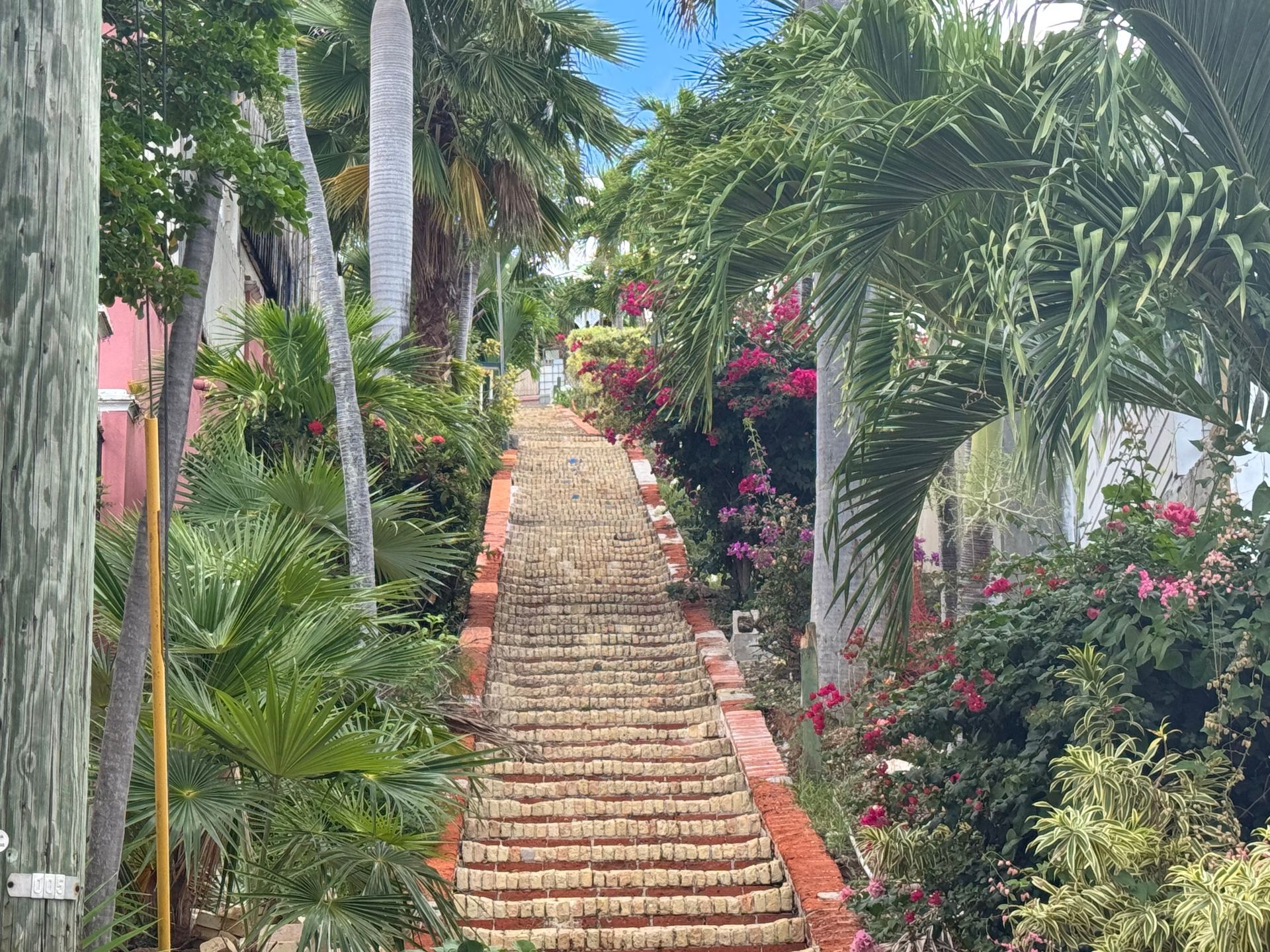
Expert Tips for Visiting the 99 Steps
Want to experience the 99 Steps like a seasoned traveler? Here are some helpful tips to make the most of your visit:
- Go Early or Late in the Day
The steps are most crowded during midday, especially when cruise ships are in port. Visit in the morning or just before sunset for fewer crowds and better lighting.
- Start at the Bottom
Begin your walk at the base of the steps near Government Hill. Climbing up gives you the most scenic view and leads you toward Blackbeard’s Castle.
- Wear Comfortable Shoes
The bricks can be uneven and slippery, especially after rain. Opt for sneakers or walking sandals with good traction.
- Bring Water and Sunscreen
The sun can be intense on the hill, and there is little shade along the steps.
- Take Your Time
The stairs are steep, so stop often to rest and take photos. The tropical flowers and surrounding architecture offer excellent photo opportunities.
How to Add the 99 Steps to Your St. Thomas Tour
Many St. Thomas walking tours include the 99 Steps as a featured stop, often paired with visits to other historic sites like:
- Blackbeard’s Castle
- Fort Christian
- Emancipation Garden
- Frederick Lutheran Church
For a unique experience, consider joining a
St. Thomas ghost tour. These evening tours explore the legends and ghost stories surrounding the island’s colonial past, including eerie tales connected to the step streets. American Ghost Walks offers one of the top-rated ghost tours in the Virgin Islands, blending real history with expertly told local legends.
Additional Resources
Wrapping Up Your Journey Through the 99 Steps
The 99 Steps in St. Thomas are more than just a pretty photo op. They are a lasting reminder of the island’s Danish colonial history, a clever engineering solution, and one of the most iconic landmarks in the Virgin Islands.
Whether you are interested in architecture, local history, or just a great view of Charlotte Amalie, the 99 Steps belong on your travel list.
Ready to explore the hidden history of St. Thomas?
Join
American Ghost Walks for a
guided tour that brings the city’s past to life with unforgettable stories and expert guides.
